|
Customer Requirements
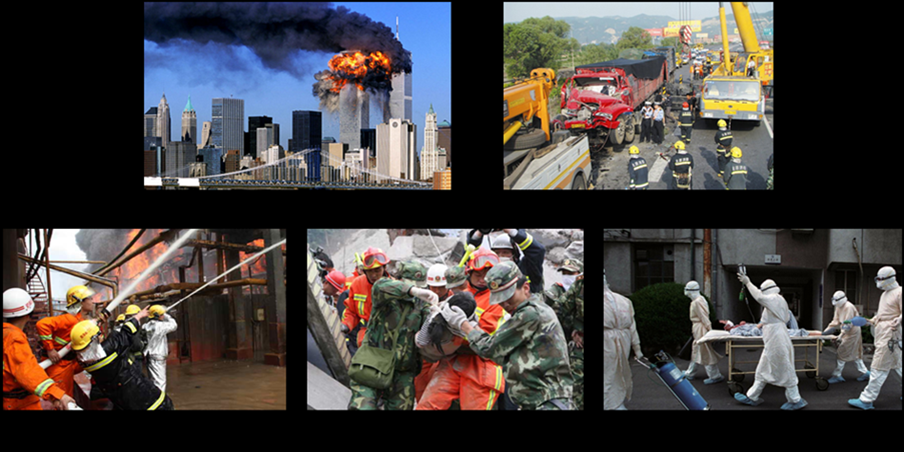 When major events occur or natural disasters break out, the government, military, armed police, public security, transportation, and other rescue departments require rapid and efficient communication to learn the situation, thus making decisions in a timely and scientific manner and dispatching manpower and materials to implement unified command across regions, departments, and different types of police force. The integrated command and dispatch system is playing an increasingly important role. When major events occur or natural disasters break out, the government, military, armed police, public security, transportation, and other rescue departments require rapid and efficient communication to learn the situation, thus making decisions in a timely and scientific manner and dispatching manpower and materials to implement unified command across regions, departments, and different types of police force. The integrated command and dispatch system is playing an increasingly important role.
The command and dispatch system needs to provide not only audio and visual information, but also visual dispatch functions, challenging the command and dispatch system.
Solution Description
The integrated command and dispatch system developed by ZTE Trunking consists of the wired and wireless converged dispatch subsystem, video dispatch subsystem, GIS subsystem, call center subsystem, alarm reception subsystem, contingency plan management subsystem, digital voice recording subsystem, coordinated command subsystem, clock synchronization subsystem, large-screen display subsystem, and so on. It can be closely integrated with industry information systems to complete industrial command and dispatch.
The following figure shows the general structure and hierarchy of the system.
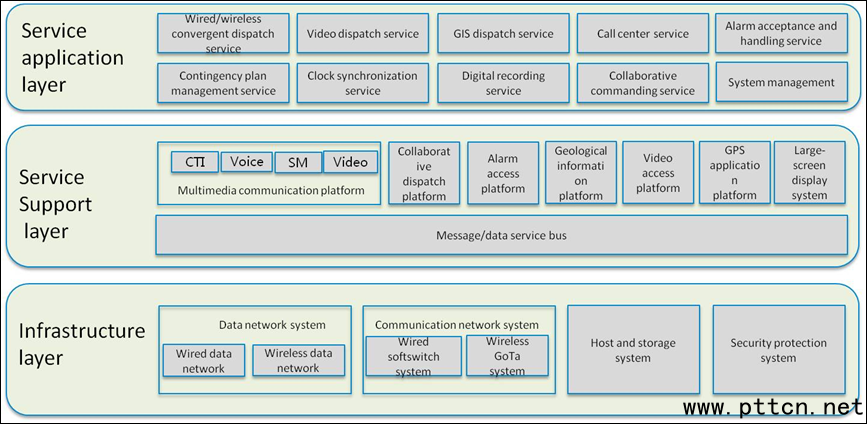
1. Wired and Wireless Converged Dispatch Subsystem
The subsystem adopts the NGN system architecture and complies with international standards. It provides access to various wired and wireless networks to achieve the convergence of networks and services, including the traditional telecommunications services, trunking dispatch services, and emergency command services. The subsystem can provide a variety of services (including voice, video, data, and instant messaging) according to the industry requirements and implement unified dispatch of these services.
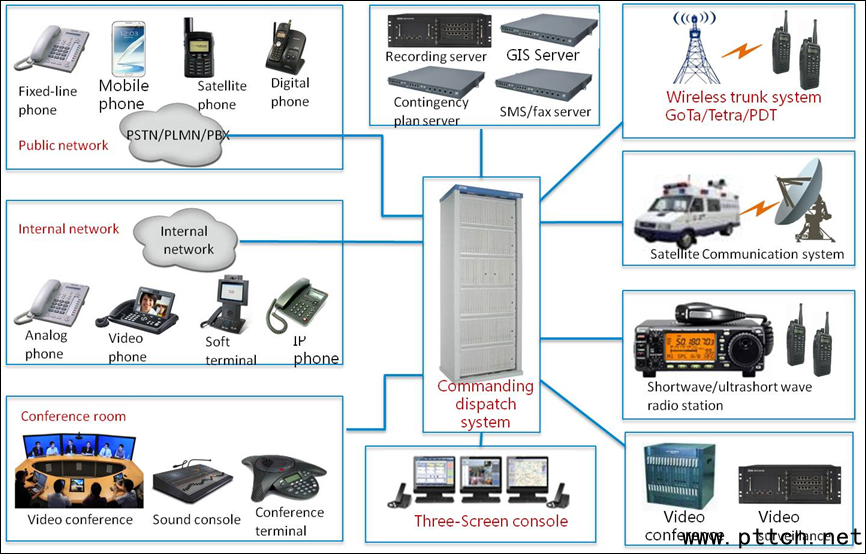
Functions of the Subsystem
-
The wired dispatch system consists of a program-controlled telephone system and an IP telephone system for an intranet. Its functions include break-in, interception, single call, and group call, as well as dispatch of video conferencing and video surveillance systems.
-
The wireless dispatch system implements dispatch of the wireless trunking system, shortwave/ultra-shortwave radio stations, and satellite communications systems.
-
The hotline center system provides functions such as ACD, IVR, CTI, and agent.
-
Other supporting systems include the short message system, digital recording system, contingency plan system, and fax system.
Characteristics of the Subsystem
-
Support for multiple communication methods (such as wired and wireless communication) and unified dispatch
-
High reliability because of hot spare core switching network elements (NEs) and remote disaster recovery
2. Video Dispatch Subsystem
The video dispatch system can use wired or wireless methods to transmit video information collected by fixed cameras, universal terminals, trunking terminals, and individual devices to the receiver terminals for display. These receiver terminals include dispatch consoles, handheld terminals, and video conference terminals. In this way, field information is audible and visible to dispatch and command personnel, which provides effective reference for commanding and decision making.
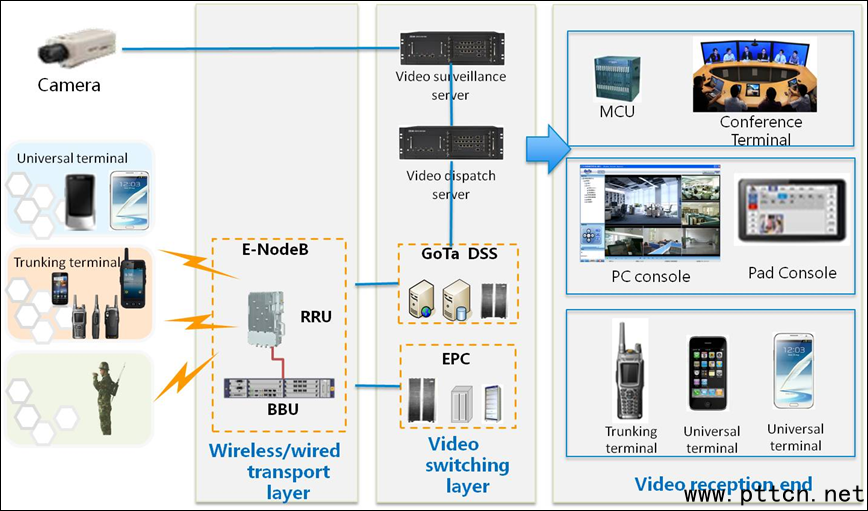
Functions of the Subsystem
-
Video surveillance on dispatch consoles and handheld terminals
-
Transmission of video information collected by multiple types of terminals, including trunking terminals, and universal terminals, and individual devices
-
Distribution of video information to multiple types of terminals, including trunking terminals, and universal terminals, and video conference terminals
-
Video call and video broadcast services
-
Remote photographing and photo distribution and forwarding
Characteristics of the Subsystem
-
Multi-terminal access capability. Access is provided for trunking terminals, common terminals, and video conference terminals to meet different users' requirements
-
Professional encoding/decoding server and video streaming server that feature powerful processing capability
-
Multi-screen processing capability to accommodate trunking terminals and common terminals with different resolutions
-
Adaptation to terminal resolution and bandwidth so that video resolution always matches the terminal specification
-
The video surveillance system is independent of the video dispatch system and therefore they are coupled to a small extent. The system can be flexibly integrated with existing video surveillance systems.
3. GIS Subsystem
The GIS subsystem visualizes the deployment of personnel, vehicles, and video surveillance points, and allows operators to implement dispatch and command operations directly on maps, thus substantially increasing the dispatch and command efficiency.
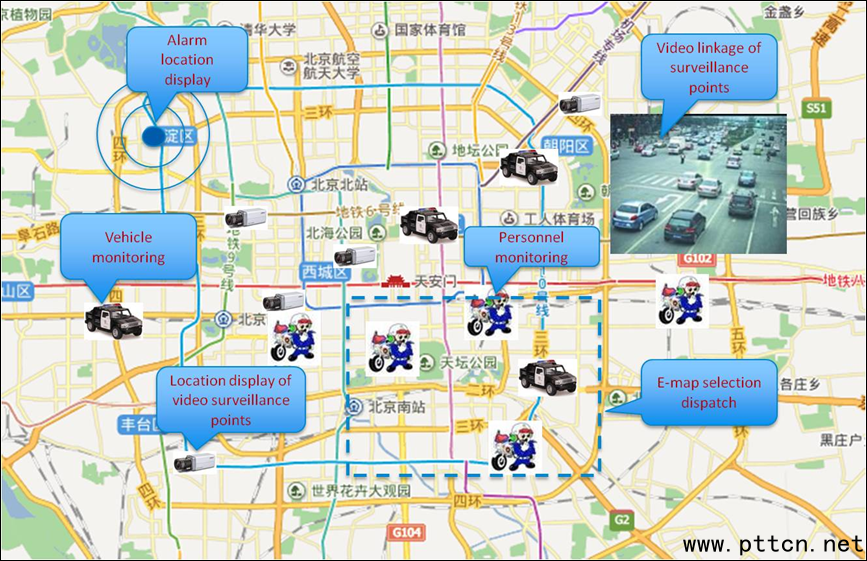
Functions of the Subsystem
-
Basic GIS functions, including map browsing, address query, layer control, and other frequently-used GIS functions
-
GPS positioning functions, including personnel positioning, vehicle positioning, and video surveillance point positioning.
-
Four-color pre-warning; real-time surveillance and comprehensive analysis on relevant information based on service requirements
-
Decision-making support functions, including personnel deployment and patrol management
-
System management functions, including user management, system right management, data synchronization, and automatic update
Characteristics of the Subsystem
-
The subsystem supports complete GIS functions and provides a graphical operation interface for service applications.
-
The subsystem links positioning, video and voice dispatch and can better meet requirements of dispatch scenarios.
Solution Highlights
Peacetime and emergency integration
-
Peacetime: Trunking dispatch, voice, data, and short message services are available.
-
Emergency: Multi-priority mechanisms ensure that emergency handling departments are given the precedence over system resources.
Digital multimedia trunking services
-
The solution provides multimedia trunking services, such as positioning, mobile video surveillance, and group video call.
-
Various types of industry application software can run on terminals.
Multi-level and 3-dimenaional command system
Extremely high reliability
-
Dual-network and dual-plane networking as well as redundancy designs (active/standby and disaster recovery) for key components
-
Support for single-station operation, failsoft, and direct mode operation
(中国集群通信网 | 责任编辑:陈晓亮) |

 When major events occur or natural disasters break out, the government, military, armed police, public security, transportation, and other rescue departments require rapid and efficient communication to learn the situation, thus making decisions in a timely and scientific manner and dispatching manpower and materials to implement unified command across regions, departments, and different types of police force. The integrated command and dispatch system is playing an increasingly important role.
When major events occur or natural disasters break out, the government, military, armed police, public security, transportation, and other rescue departments require rapid and efficient communication to learn the situation, thus making decisions in a timely and scientific manner and dispatching manpower and materials to implement unified command across regions, departments, and different types of police force. The integrated command and dispatch system is playing an increasingly important role.


